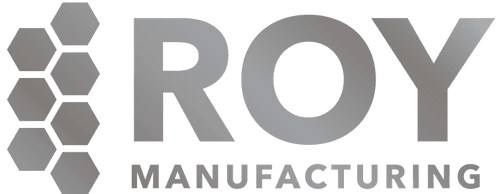About Plastics and Rubber
Perforated plastics and rubber have emerged as indispensable materials across various industries due to their versatility, durability, and unique properties. From industrial applications to everyday consumer products, perforated plastics and rubber play crucial roles in enhancing functionality, aesthetics, and performance.
Common Materials Used in Perforated Applications:
Rubbers:
- Natural Rubber: Derived from the sap of rubber trees, natural rubber offers excellent elasticity and resilience, making it suitable for perforation in various applications.
- Synthetic Rubber: Synthetic rubbers like neoprene, EPDM (Ethylene Propylene Diene Monomer), and nitrile rubber provide enhanced resistance to chemicals, weathering, and abrasion, making them ideal for perforated applications in harsh environments.
Plastics:
- Polyethylene (PE): Known for its lightweight nature and chemical resistance, perforated PE finds applications in filtration, packaging, and automotive components.
- Polypropylene (PP): With its high melting point and exceptional durability, perforated PP is widely used in battery separators, air filtration, and food packaging.
- PVC (Polyvinyl Chloride): PVC offers a balance of strength, rigidity, and cost-effectiveness, making it suitable for perforated applications such as signage, screens, and construction materials.
- Acrylic: Renowned for its optical clarity and weather resistance, perforated acrylic is utilized in architectural elements, lighting fixtures, and displays.
Common Applications for Perforated Plastics and Rubbers:
1. Filtration:
Air Filtration: Perforated rubber and plastic materials serve as effective air filters in HVAC systems, automotive engines, and industrial machinery, trapping dust, pollen, and particulate matter.
Liquid Filtration: Perforated membranes made from rubber and plastics facilitate the filtration of liquids in applications ranging from water treatment to pharmaceutical manufacturing.
2. Acoustic Solutions:
Sound Absorption Panels: Perforated rubber and plastics are employed in acoustic panels to reduce noise levels in architectural spaces, auditoriums, and recording studios by absorbing sound waves.
Automotive Components: Perforated materials in vehicle interiors help dampen noise and vibrations, enhancing passenger comfort and reducing road noise.
3. Decorative and Architectural Elements:
Facades: Perforated metalized plastics and rubber sheets are utilized as decorative facades in buildings, providing aesthetic appeal while allowing for ventilation and light transmission.
Interior Design: Perforated rubber and plastic panels serve as decorative partitions, wall claddings, and ceiling tiles, adding visual interest to interior spaces.
4. Packaging Solutions:
Food Packaging: Perforated plastic films extend the shelf life of perishable foods by allowing for controlled airflow, preventing moisture buildup and microbial growth.
Protective Packaging: Perforated rubber sheets are employed as cushioning materials in packaging to safeguard delicate items during transit.
5. Industrial Applications:
Conveyor Belts: Perforated rubber belts facilitate the drainage of liquids and debris in industrial conveyor systems, ensuring smooth material handling in wet environments.
Gaskets and Seals: Perforated rubber gaskets create a tight seal in mechanical assemblies, preventing leakage of fluids and gases in automotive, aerospace, and manufacturing industries.
6. Agricultural Sector:
Crop Protection: Perforated plastic mulch films control weed growth, conserve soil moisture, and regulate soil temperature, thereby enhancing crop yield and quality in agriculture.
Horticultural Applications: Perforated rubber and plastic pots, trays, and containers are used in nurseries and greenhouses for seedling propagation and plant cultivation.
Benefits of Perforated Plastics and Rubber:
- Enhanced Performance. Perforations improve airflow, drainage, and filtration efficiency, enhancing the performance of products in various applications.
- Customizability. Perforated materials can be tailored to meet specific size, shape, and pattern requirements, offering flexibility in design and functionality.
- Durable and Long-lasting. Rubber and plastics are inherently durable and resistant to corrosion, moisture, and UV radiation, ensuring longevity in demanding environments.
- Cost-effective Solutions. Perforated rubber and plastics offer cost-effective alternatives to traditional materials like metal, providing comparable performance at a lower cost.
- Environmental Sustainability. Many perforated rubber and plastics are recyclable and contribute to sustainability efforts by reducing waste and energy consumption in manufacturing processes.
Roy Manufacturing can help with all your perforated materials needs.
At Roy Manufacturing, we don’t just perforate metal; we perforate plastics and rubber, too. Perforated plastics and rubber have revolutionized numerous industries with their versatility, durability, and performance. From filtration and acoustic solutions to decorative elements and packaging solutions, perforated materials continue to innovate and elevate the standards of modern engineering and design. Contact us today to learn more and get a free estimate for your project.
